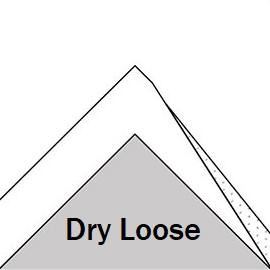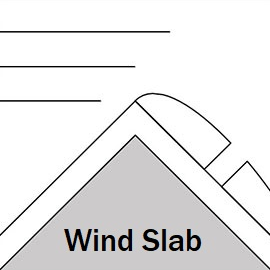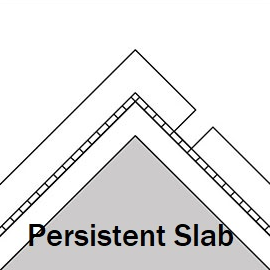Gudauri
Natural avalanches are unlikely, human-triggered avalanches are possible. Small avalanches in specific areas, or large avalanches in isolated areas.
10 - 20 cm of loose snow in high elevations means loose snow avalanches are possible. Where winds have deposited this snow, windslab avalanches can be triggered on recent melt-freeze crusts. In addition, there is evidence of a weak layer inside the snowpack. While this layer is probably only found in isolated areas with a thin snowpack (<150 cm), this layer can cause size 2 (or possibly size 3) avalanches if triggered.
Forecast issued at: 4 March 2024 23:00
Forecast valid until: 6 March 2024 23:00
Forecaster: Peter S
High Alpine
> 2600m
2 Moderate
Heightened avalanche conditions on specific terrain features. Evaluate snow and terrain carefully; identify features of concern.
Alpine
2000m - 2600m
2 Moderate
Heightened avalanche conditions on specific terrain features. Evaluate snow and terrain carefully; identify features of concern.
Sub Alpine
< 2000m
1 Low
Generally safe avalanche conditions. Watch for unstable snow on isolated terrain features.
Avalanche Problems
Loose Dry

Recent snow has fallen on top of a hard crust on all aspects. On shady aspects, there are weak, sugary, and non-cohesive snow crystals at the surface. Small loose dry 'sluffs' moving on the crust layers have been observed in the past week. Keep this in mind when approaching steep terrain with hazards like rocks or cliffs below.
| Sensitivity | The specific avalanche problem type is reactive to human rider triggers. Easy to trigger with ski cut. |
| Distribution | Specific areas, with common characteristics. Evidence for instabilities exists, but it is not obvious and finding it requires careful observations. |
| Time of Day | All day |
| Trend | Improving |
| Confidence | Moderate |
Wind Slab

Small areas of windslab can be found near ridges on a range of aspects due to recent N/NE winds moving snow in the last few days. They may run fast on buried crust layers. These wind slabs may be surrounded by loose, unconsolidated snow, making wind slabs hard to detect. They may also sit on loose, facetted layers, making them particularly easy to trigger.
| Sensitivity | The specific avalanche problem type is reactive to human rider triggers. Easy to trigger with ski cut. |
| Distribution | Specific areas, with common characteristics. Evidence for instabilities exists, but it is not obvious and finding it requires careful observations. |
| Trend | Improving |
| Confidence | Moderate |
Persistent Slab

Weak, facetted snow layers have been found around buried mid-pack crusts, in areas with shallow snow depth, and around recent melt-freeze and wind crusts. These problems may be worse in the north of the region where the snow is shallower.
| Sensitivity | The specific avalanche problem type is difficult to trigger with a human rider. |
| Distribution | A few, isolated locations; evidence for instabilities is rare and hard to find. |
| Time of Day | All day |
| Trend | No change |
| Confidence | Moderate |
Recent Avalanches and Snowpack
Recent avalanche activity:
4 March: wind slab , skier-triggered, W-NW aspect, elevation ca. 2900-2950 m (high alpine zone). 3 March: Several skier-triggered loose dry avalanches, size 1, E-NE aspect, elevation approx. 2800 - 2900 m (high alpine zone) Wind slab size 2 and glide slab size 2, east aspect, 2700 m (high alpine zone); date unknown.
Glide slabs continue to be active on multiple aspects (more commonly E, S and W) below about 2600 m, some up to size 2. These can release at any time - if you see cracks in the snow, do not stop under these areas!
Snowpack: Wind slaba in the high alpine are stabilising but remain reactive to skier-triggering in some areas. On shady aspects, places there about 10 - 20 cm of dry surface snow; on sunny aspects there have been melt-freeze cycles up to 3000 m and higher. Melt-freeze crusts are found on most aspects under the recent snow layer, extending to over 3000 m on N slopes - and higher on S slopes. Cold night temperatures are forming surface facets and surface hoar (a weak layer on top of the snowpack), and faceting snow can also be found around the underlying melt-freeze crusts. Buried crusts and weak layers may still be found deeper in the snowpack in some places, especially on N aspects at higher elevations where the snow is shallow. A facet layer down 60 cm was reactive in recent instability tests on a NE aspect at 3000 m.
Weather
Mostly sunny on Tuesday 6 Feb, with clouds rolling in early on Wednesday. Small amounts of new snow (5-10 cm) are forecasted in the course of Wednesday. Temperature ranging from -9 to -2 degrees at 2200 m. Winds are forecasted light from the S and SE during both days.
Disclaimer
Our avalanche forecasters are internationally qualified and experienced professionals, and data is provided by skilled observers. We encourage you to make your own observations and decisions, without relying solely on our forecast, since any forecast is a generalised 'best guess', and in certain cases it might be inaccurate. We can not be held liable for any actions you take in the backcountry that may result in injury, loss or death.